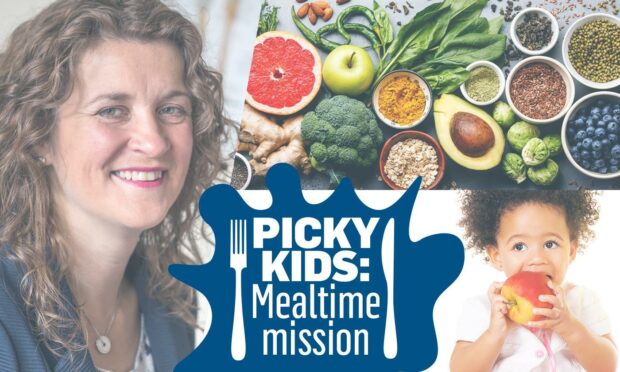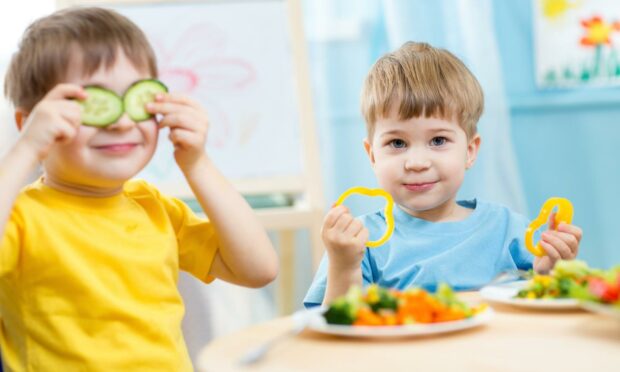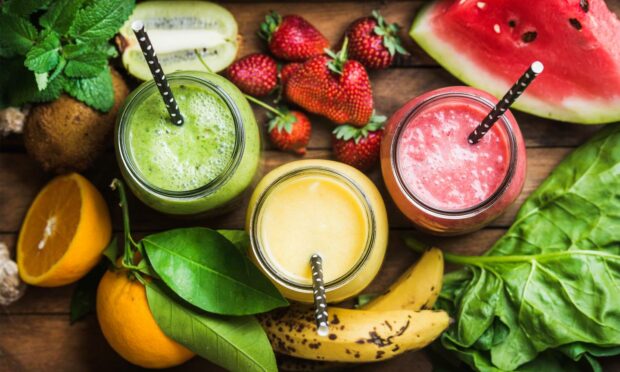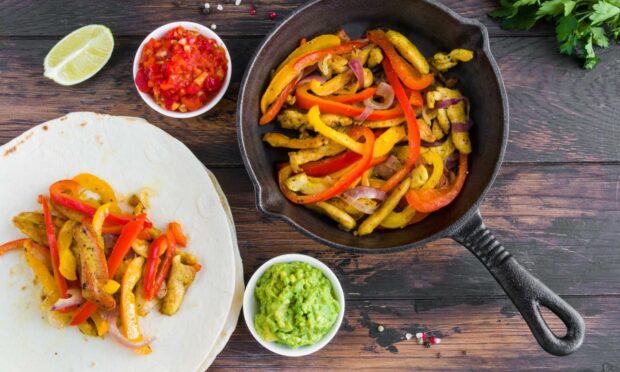Not only is Louise Blanchfield a food expert, she’s also a mother-of-two who has first-hand experience of tricky mealtimes.
Originally a physiotherapist, more than a decade ago Louise embarked on extensive research in order to create a diet to help improve her husband Richard’s autoimmune disease.
The couple also published a gluten and dairy-free cookery book to help others with a similar condition.
Based in Freuchie, Fife, with their son (15) and daughter (17), Louise retrained as nutritional therapist and is now the Food Physio.
Since the pandemic, she has taken her business online with clients across the UK as well as internationally.
Mealtime mission
I spoke to Louise about some of the problems parents and carers can face when it comes to keeping little people happy at the dinner table.
Louise has also shared one of her favourite family recipes, which you can find at the end of this article.
She explains: “From birth, children are attracted to sweet and salty foods. Sweeter things tend to be high in calories, which is key for growth and survival.
“Meanwhile, salty things have the mineral content needed for brain and nerve development.
“Their tastes start to change when they reach their late teens and are stopping growing.”
Louise adds the reason youngsters tend to dislike bitter foods is linked to a survival instinct – they can be poisonous.
She goes on: “From a psychology perspective, saying no to food is one of the only ways a child can exert any control. They don’t control much else in their lives.
“I was reading a research paper that said the tendency to reject food or reluctance to try new food peaks between the ages of two and six. It’s at the point they try a little bit more.”
New taste buds
Another interesting fact Louise shared is that children grow new taste buds every few weeks.
Taste buds die off and regenerate. As we get older, both their turnover and sensitivity decreases.
Louise says: “Taste buds for kids change every two weeks. So you need to get them to try something at least three times because by the third time the taste buds will have adapted.
“What’s important with kids it to have the rule they have to take a bite and then if they don’t like it they’re allowed to say they don’t want it anymore.”
Louise’s top tips
First and foremost, Louise says: “Eat what your kids eat – don’t expect them to eat a plate of healthy food while you are having burger and chips!”
And while she may adapt a meal if there is a particular ingredient her children don’t like, she tries to ensure the family are all eating a similar dish.
“If we are doing a meal that they’re not particularly keen on – for example salmon – we will have a piece of fish, fritter potatoes and some veggies and I might give them a different piece of meat.”
Get your children involved
When her children were young, Louise used to create a finger buffet which included things like carrot sticks, pepper sticks, olives, chunks of cheese and a boiled egg.
She says: “I used to let them pick what was on the plate. The more you can include them in the choices, the more likely they are to eat the food.”
‘Hide’ ingredients
“The other big thing is if they won’t eat it, hide it. This is where smoothies and soups come in,” Louise goes on.
“Kids often love to make smoothies because they like to watch it whoosh up in the blender.
“One of my children didn’t like to eat onions so I would make a spaghetti Bolognese but the onions, carrots and peppers I used to blend in.
“I fried them off as you would do normally, then put that in a blender with the tomatoes, garlic and whatever else you like then added it to the meat.
“That way they’re still getting all of the goodness and they just think it’s a tomato sauce.”
Family recipe
For Louise, chicken fajitas are a family favourite. She and Richard will eat them with gluten-free tortillas.
You can mix the chicken with the various flavourings in advance and marinade or chop and mix it all in the griddle pan before switching on the heat.
Chicken fajitas
Serves 4
Ingredients
- 4 chicken breasts, thinly sliced
- ½ small jar free-from red or sun-dried tomato pesto
- 1 gluten-free chicken stock cube (crumbled) or pot
- Squeezed juice of 2 limes
- 2 tbsp olive oil and 1 tbsp balsamic vinegar
- 2 tsp each of ground cumin, coriander, paprika, turmeric and ginger
- 5 garlic cloves, crushed
- Sea salt and black pepper
- 1 large onion, halved, quartered and separate layers
- 2 carrots, cut into batons
- 1 large red pepper, cut into strips
- To serve: tortillas, fresh coriander, natural yoghurt, grated cheese, guacamole, etc.
Method
- Add and mix all the ingredients, minus the vegetables, with the chicken (leaving the veg for later) and either marinade for a while or just mix them straight into a griddle pan and turn on the pan at maximum heat. Whichever way you do it, spread the chicken pieces out evenly and flat straight away using two wooden spoons.
- When they’re sizzling, don’t touch them for about a minute and you’ll see the sauce dry out and start to char against the base of the pan – if the chicken’s thinly sliced they’ll cook, don’t worry.
- At that point, flip each of the pieces over with your spoons (use long-handled ones because it will be spitting fat by this point – if it’s not, you’re not sizzling right!). After a further minute on the other side, tip a small amount of water into the pan and stir to reconstitute the fajita sauce around the chicken
- Throw in the veg and stir-fry for a further minute or so – with the heat high the veg will cook quickly. Add a little more water if the sauce has gone and starting to char again. Stir and reduce so it’s just coated round everything nicely.
- Serve the pan on the table and let people make their own tortillas up with the other toppings. Or you can serve them up yourself if you have smaller children.
Get in touch
Would like to share your tricky mealtime tales? Are there other topics you’d like us to cover in our Mealtime Mission series?
Please contact us using the form below.















